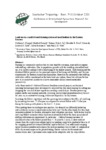Use este identificador para citar ou linkar para este item:
http://www.alice.cnptia.embrapa.br/alice/handle/doc/404102Registro completo de metadados
| Campo DC | Valor | Idioma |
|---|---|---|
| dc.contributor.author | VIELHAUER, K. | pt_BR |
| dc.contributor.author | DENICH, M. | pt_BR |
| dc.contributor.author | SÁ, T. D. de A. | pt_BR |
| dc.contributor.author | KATO, O. R. | pt_BR |
| dc.contributor.author | KATO, M. do S. A. | pt_BR |
| dc.contributor.author | BRIENZA JUNIOR, S. | pt_BR |
| dc.contributor.author | VLEK, P. L. G. | pt_BR |
| dc.date.accessioned | 2011-04-10T11:11:11Z | pt_BR |
| dc.date.available | 2011-04-10T11:11:11Z | pt_BR |
| dc.date.created | 2003-09-15 | pt_BR |
| dc.date.issued | 2001 | pt_BR |
| dc.identifier.citation | In: CONFERENCE ON INTERNATIONAL AGRICULTURAL RESEARCH FOR DEVELOPMENT, 2001, Bonn. Deustscher tropentag 2001: proceeding. Bonn: University of Bonn, 2001. | pt_BR |
| dc.identifier.uri | http://www.alice.cnptia.embrapa.br/alice/handle/doc/404102 | pt_BR |
| dc.description | Burning is a commonly used method to clear land for cropping, especially in regions with shifting cultivation. Due to population growth with the resulting intensified land use, it is mostly combined with a shortening of the fallow periods. Both burning and the shortened fallow period are the principal causes of declining soil fertility, and they are symptomatic for Eastern Amazonian agriculture. Based on the assumption that shifting cultivation will be maintained as the basic land-use system, these two adverse factors have to be improved in order to achieve reasonable and increased sustainable productivity. In the framework of a bilateral German-Brazilian research project, mechanized mulching technologies were developed to carry out fire-free land clearing by cutting and chopping the tree-rich fallow vegetation creating a mulch layer. Besides preserving organic matter and mineral nutrients, mulching permits land preparation at any time of the year, as, in contrast to burning, it does not depend on the dry season. Enriching the fallow vegetation with fast growing trees enhances the effect of mulching by increasing biomass: 25 t/ha/year as compared to natural fallow with 10 t/ha/year during the linear growth phase in the first 2 - 3 years. When putting these technologies into practice, the demand on differently behaving nutrient stocks in mulch-based systems has to be met. On the other hand, fire-free land preparation allows for flexible, alternative land utilization practices. Both factors lead to new crop-fallow scenarios where land use is intensified whilst the basic principles of shifting cultivation are maintained. In particular: 1) fallow biomass increase by enrichment reduces the fallow period from 4 - 6 years to 2 years, 2) slow nutrient release from the mulch layer allows highly demanding crops to be planted at the end of the cropping period low mineral fertilizer input is desired, 3) an additional cropping period becomes possible and reduces the land preparation time by half, 4) independent of the dry season crops can be planted taking climate and market demands into consideration, and 5) perennial cash crops can be integrated into the crop rotation. | pt_BR |
| dc.language.iso | eng | eng |
| dc.rights | openAccess | eng |
| dc.subject | Região Bragantina | pt_BR |
| dc.subject | Pará | pt_BR |
| dc.subject | Brasil | pt_BR |
| dc.subject | Tipitamba | pt_BR |
| dc.title | Land-use in a mulch-based farming system of small holders in the eastern Amazon. | pt_BR |
| dc.type | Artigo em anais e proceedings | pt_BR |
| dc.date.updated | 2018-01-19T11:11:11Z | pt_BR |
| dc.subject.thesagro | Cultivo Migratório | pt_BR |
| dc.subject.thesagro | Pequeno Produtor | pt_BR |
| dc.subject.thesagro | Uso da Terra | pt_BR |
| dc.subject.thesagro | Sistema de Cultivo | pt_BR |
| dc.subject.nalthesaurus | Amazonia | pt_BR |
| dc.format.extent2 | Não paginado. | pt_BR |
| riaa.ainfo.id | 404102 | pt_BR |
| riaa.ainfo.lastupdate | 2018-01-19 -02:00:00 | pt_BR |
| dc.contributor.institution | KONRAD VIELHAUER, UNIVERSITY OF BONN | pt_BR |
| dc.contributor.institution | MANFRED DENICH, UNIVERSITY OF BONN | eng |
| dc.contributor.institution | TATIANA DEANE DE ABREU SA, CPATU | eng |
| dc.contributor.institution | OSVALDO RYOHEI KATO, CPATU | eng |
| dc.contributor.institution | MARIA DO SOCORRO ANDRADE KATO, CPATU | eng |
| dc.contributor.institution | SILVIO BRIENZA JUNIOR, CPATU | eng |
| dc.contributor.institution | PAUL L. G. VLEK, UNIVERSITY OF BONN. | eng |
| Aparece nas coleções: | Artigo em anais de congresso (CPATU)  | |
Arquivos associados a este item:
| Arquivo | Descrição | Tamanho | Formato | |
|---|---|---|---|---|
| LandUseMulchresumo.pdf | 231 kB | Adobe PDF |  Visualizar/Abrir |









